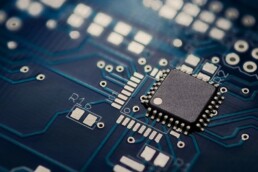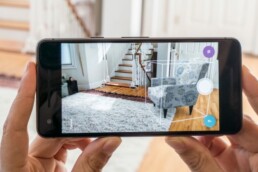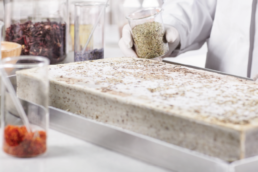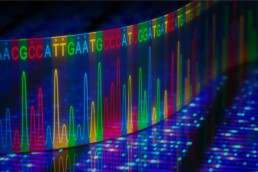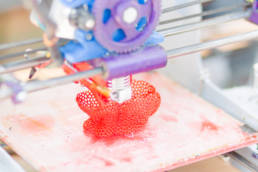Bioprinting has the potential to revolutionize the healthcare industry by creating living human cells or tissues for use in regenerative medicine. Hundreds of thousands of people around the world are on transplant waiting lists. However, there aren’t nearly enough donor organs available to fill this demand.
Imagine a technology that can create organs from scratch. That is the idea behind bioprinting. Bioprinting technology has not yet evolved to the point of printing organs. However, it has advanced enough to print simpler tissues such as skin, meniscus, cartilage, and even blood vessels. Yet bioprinting has massive potential to extend human life through the eventual printing and replacing of human organs.
Seok-Hwan You is the founder and CEO of ROKIT Healthcare, one of the first biotech companies to 3D print PEEK, short for Polyether ether ketone, a bio-inert thermoplastic, and other high-performance materials. The company focuses on regenerative healthcare using bioprinting technology such as 3D biofabrication. As well as the development of patient-specific tissue and organ regeneration therapies. To gain a greater understanding of the bioprinting industry’s current state, we sat down with Seok-Hwan You. He gave his thoughts on the bioprinting sector and how ROKIT Healthcare will leverage bioprinting to improve the quality of life and health worldwide.
What is Bioprinting?
Bioprinting works very similarly to 3D printing. 3D printing uses a technique that deposits layers of material on top of each other. This creates a 3-dimensional object one layer at a time. While 3D printers use plastic or other materials, bioprinters use a printable material called “bio-ink.” A bio-ink is a mixture of living cells and other biomaterials. The key to creating a “bio-ink” is having access to a healthy supply from a living human (donor).
For optimal usage of bio-ink, raw materials should come from the patient. It is easier for the immune system to work with autologous tissues (meaning that the donor and recipient are the same people).
Bioprinters – How do they Work?
Bioprinting offers a new opportunity for the development and preparation of personalized medicines. The advantages of bioprinters are that they minimize time and risk. As well as save costs for re-creating healthy tissue to implant into a patient. Seok Hwan, You believes that hospitals and clinics will soon need to have a bioprinter inside the operating theatre. This is a new form of point-of-care personalized healthcare solution that maximizes the benefits of autologous regenerative technologies.
ROKIT Healthcare’s signature 4D bioprinter is Dr. INVIVO, which ROKIT has already been supplying for material engineering and advanced prototyping in biomedical fields with materials like PEEK and ULTEM (polyetherimide). They are dedicated to providing bio-inks optimized for human tissue printing. Their ideal bio-ink formulations satisfy material and biological requirements that mimic cellular components found in tissue-specific microenvironments.

INVIVO Bio-inks
- HumaTein – A bio-ink solution based on the cell-sheet technology that replicates the tunable stiffness of the tissue to be differentiated, ensuring optimal regenerative efficacy.
- INVIVO GEL – a gelatin-based bioink that is comprised of modified natural ECM components. The benefits of INVIVO GEL are that it has tailorable properties, good compatibility, and uniformity, which makes it easier to print while keeping structural stability.
Mr. You explains, “We envision integrating the 3D bioprinter and its applications into traditional healthcare services, realizing the idea of bioprinting as a medical service.”
How Companies can benefit from Bioprinting
Many industries can benefit from bioprinting technology. The fields to which bioprinting applies range from tissue engineering and regenerative medicine to micro-tissue development for pharmaceutical testing as an alternative to animal experiments. Today, most new drugs have to go through an animal testing process. This ensures they are safe to use on humans. These animals are bred explicitly for testing and they are euthanized once the testing process is finished. Bioprinting offers the potential to create functional, living, human tissue, or particular organs. These are more accurate since they are based on human bio-inks. Therefore this process offers much more predictive results.
Some of the top clients of ROKIT Healthcare include:
- Research labs at Universities
- Government institutions
- Hospital Laboratories
- Pharmaceutical companies
With 3D bioprinting-based therapy solutions such as skin and cartilage regeneration platforms, the applications of bioprinting can expand beyond life sciences research to use in medical practice.
“Bioprinting must converge with other preventive medicine and diagnostic technologies, digitalization, and healthcare management strategies to be truly effective at the level of patient outcomes. ROKIT Healthcare seeks to address regenerative medicine and healthcare from a much wider vantage point, with bioprinting as an important – but not the only – area of our endeavors,” says ROKIT CEO You.
The Future of Bioprinting
Seok-Hwan You says the next step in bioprinting is integrating 3D bioprinters and their applications into traditional healthcare services. This will play a significant role in making the idea of bioprinting as a medical device a reality. Hospitals worldwide are already adding dedicated facilities for bioprinting; however, the eventual goal is to have a bioprinter right next to every operating table.
Besides this, there need to be more clinical trials on 3D bioprinted living tissues transplanted into patients. These are the first steps to advancing the technology to produce personalized organs to replace body parts as they wear out. ROKIT has already finished its clinical trials for bioprinting-based skin regeneration for diabetic foot ulcer patients in India. Now the company has distribution deals with hospitals in several countries so they can offer skin generation bioprinting therapy to foot ulcer patients.
Lastly, there are many kinds of bio-inks in the market today, such as synthetic and natural polymers. However, they are not all fit for use in the human body. Therefore, the future of bioprinting lies in bio-links based on the extracellular matrix (ECM) derived from the human body. The ECM is a kind of scaffold made up of proteins and other molecules. It gives cells the structural and biochemical support they need to live and multiply. In the future, it could eventually become the bio-ink used for the 3D printing of the first living, functioning human lung.
“ROKIT Healthcare’s greatest focus lies not on synthetic plastics, but natural ingredients like human ECM, as supporting materials for 3D printed living cells,” said Mr. You.
Biggest Challenges
The biggest challenge that players in the 3D industry face are closing the gap between the available technology and clients’ actual needs in bioprinting research. Therefore, it is crucial to understand that bioprinting, is not only about manufacturing structures with structural stability. Rather it is about promoting cell growth and viability.
Popular
Related Posts

